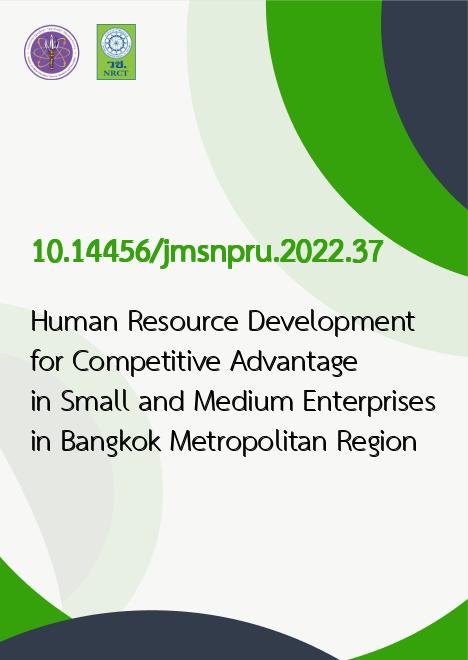
|
Human Resource Development for Competitive Advantage in Small and Medium Enterprises in Bangkok Metropolitan Region |
|---|---|
| รหัสดีโอไอ | |
| Creator | Varinthorn Tarasansombut |
| Title | Human Resource Development for Competitive Advantage in Small and Medium Enterprises in Bangkok Metropolitan Region |
| Contributor | Chawewan Puranitee |
| Publisher | Faculty of Management Science Nakhon Pathom Rajabhat University. |
| Publication Year | 2565 |
| Journal Title | Journal of Management Science Nakhon Pathom Rajabhat University |
| Journal Vol. | 9 |
| Journal No. | 2 |
| Page no. | 92-110 |
| Keyword | competitive advantage, human resource development, Small and Medium Enterprises |
| URL Website | https://so03.tci-thaijo.org/index.php/JMSNPRU/issue/view/17363 |
| Website title | https://so03.tci-thaijo.org/index.php/JMSNPRU/index |
| ISSN | 2392-5817 |
| Abstract | In this research, the researchers have defined two objectives: 1) To compare the competitive advantages of small and medium enterprises in the Bangkok Metropolitan Region when classified by personal factors. and 2) to study the influence of human resource development that affects the competitive advantage in small and medium enterprises in the Bangkok Metropolitan Region.The population was 17,670 business operators. Data were collected from 402 samples by convenient sampling method. The statistics used to analyze the data consisted of an independent t-test, one-way ANOVA, and simple regression with Structural Equation Model (SEM).The results showed that1. Comparison of competitive advantages in SMEs in the Bangkok Metropolitan Region differ according to gender, age, education, work experience, type of business, business model, and age of business statistically significant at the .01 level.2. Human resource development statistically affects the competitive advantages (b=0.91). Three factors impacted by Human resource development consist of; Organizational Learning Orientation (?X5=0 . 6 0 ), Strategic Capability (?X1=0 . 5 9 ), and Individual Learning (?X4=0 . 5 8 ), and the first three effects of competitive advantage respectively are Efficiency (?y1=0 . 5 9 ), Quality (?y2=0 . 4 9 ), and Innovation (?y3=0 . 4 4 ). The equation has 84.40% predictive power. |